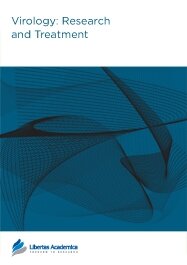

Publication Date: 17 Mar 2008
Journal: Virology: Research and Treatment
Citation: Virology: Research and Treatment 2008:1 17-28

1Sanford School of Medicine, University of South Dakota, 414 E. Clark St., Vermillion, S.D. 57069. 2Department of Diagnostic Medicine and Pathobiology, L-229 Mosier Hall, College of Veterinary Medicine, Kansas State University, Manhattan, KS 66506. 3Department of Veterinary Science/ADRDL, North Campus Drive, South Dakota State University, Brookings, SD 57007. 4Actokine Therapeutics, 12 Middlesex Rd. #411, Chestnut Hill, MA 02467.
Abstract
Porcine reproductive and respiratory syndrome virus (PRRSV) is an economically significant agent for which there currently are no effective treatments. Development of antiviral agents for PRRSV as well as many other viruses has been limited by toxicity of known antiviral compounds. In contrast, antibiotics for non-virus microbial infections have been widely useful, in part because of their acceptable toxicity in animals. We report here the discovery that the quinolonecontaining compound Plasmocin™, as well as the quinolones nalidixic acid and ciprofloxacin, have potent anti-PRRSV activity in vitro. PRRSV replication was inhibited by these antibiotics in both cultured MARC-145 cells and cultured primary alveolar porcine macrophages (PAMs). Furthermore, sub-optimal concentrations of nalidixic acid synergized with antiviral cytokines (AK-2 or IFN-γ) to quantitatively and qualitatively inhibit PRRSV replication in MARC-145 cells or PAMs. The antiviral activity of Plasmocin and nalidixic acid correlated with reduced actin expression in MARC-145 cells. Replication of the related lactate dehydrogenase-elevating virus (LDV) was also inhibited in primary mouse macrophages by Plasmocin. These results are significant to the development of antiviral strategies with potentially reduced toxicity, and provide a model system to better understand regulation of arterivirus replication.
PDF (406.88 KB PDF FORMAT)
RIS citation (ENDNOTE, REFERENCE MANAGER, PROCITE, REFWORKS)
BibTex citation (BIBDESK, LATEX)

We were invited to write a review article for Virology: Research and Treatment. The review process was very quick and smooth and our interactions with Libertas Academica staff was clear, efficient and very personable. I highly recommend publishing with this group.
Facebook Google+ Twitter
Pinterest Tumblr YouTube